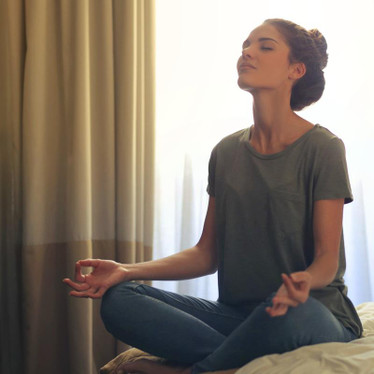 Flick through a magazine or scroll through your Instagram feed any day of the week and you’ll come across something about Mindfulness. So, what exactly is it? How does it work, how does it make you feel better, and how is it possible to integrate Mindfulness into your life? We’ve got the answers for you, thanks to our friends at The Kindness Institute, our Charity of the Month this January.
Flick through a magazine or scroll through your Instagram feed any day of the week and you’ll come across something about Mindfulness. So, what exactly is it? How does it work, how does it make you feel better, and how is it possible to integrate Mindfulness into your life? We’ve got the answers for you, thanks to our friends at The Kindness Institute, our Charity of the Month this January.
What is Mindfulness?
According to the English Oxford Dictionary, Mindfulness has two definitions:
- “The quality or state of being conscious or aware of something.”
- “A mental state achieved by focusing one's awareness on the present moment, while calmly acknowledging and accepting one's feelings, thoughts, and bodily sensations, used as a therapeutic technique.”
The second definition is a pretty good description of the practice of Mindfulness, which is what people are generally referring to when they talk about ‘Mindfulness’. It’s a method that helps with self-care and stress relief. It’s about paying attention to what’s happening in the present, in the moment you are experiencing, without judging yourself or others. It’s about letting go and not worrying so much about the past and the future.
The Kindness Institute works with New Zealand teens, helping them to deal with the stress in their lives by learning Mindfulness and Yoga. They use the acronym COAL (invented by Daniel J. Siegel, M.D) to help describe what Mindfulness includes. For The Kindness Institute, it’s not just paying attention to the present moment, but it’s doing so with the following:
- C - stands for curiosity (inquiring into how you are feeling and what you are doing without being judgmental)
- O - stands for openness (having the freedom to experience what is occurring as simply the truth, without judgments)
- A - stands for acceptance (taking as a given the reality of where you are and the need to be precisely where you are).
- L - stands for love (being kind, compassionate, and empathetic to others and to yourself)
Sounds simple, right? But in our busy, pressured lives, with too much work, too many devices and not enough rest and relaxation, it can be something that we really struggle to achieve! And that’s why Mindfulness has become such a buzzword in our culture.
Who Invented Mindfulness?
Mindfulness has been around forever, in Buddhism, Zen practices, Tibetan meditation practice, and other Eastern philosophies and religions. In our Western world, it started to be incorporated into psychology and psychiatry in the 1970s and was found to reduce stress and anxiety in patients, help with depression, addiction and all sorts of other conditions.
One of the pre-eminent teachers of Mindfulness, Jon Kabat-Zinn, created his Mindfulness-Based Stress Reduction (MBSR) program in the USA in 1979 and that really raised awareness of Mindfulness in Western culture. The MBSR program and ones like it are now used in schools, prisons, hospitals and workplaces all over the world.
How to Practice Mindfulness
You can take a course and learn more about Mindfulness, or you can start small, do some reading and integrate a few things into your day to help you be more mindful. Either way, don’t get overwhelmed by adding yet another thing to your to-do list. Cultivating Mindfulness should make life easier, more manageable, and not seem like a chore.
Mindfulness is most often practiced via meditation. If you’ve never meditated before, don’t worry! Just start with a short daily meditation practice and make it simple - sit comfortably, with your eyes closed, in the same space for 5 minutes a day, everyday. Do it as soon as you wake up in the morning, at night, or, if you’re part of a busy household, while sitting in your car in the garage or outside the supermarket. Focus on your breath, following the breath in and out one breath at a time, tuning into the way it feels in your body, belly, chest or nostrils.
If it helps, download a meditation app and listen to guided meditations. There are tonnes of great apps available for Mindfulness meditations, including Headspace and Calm. For a free 20 minute meditation from The Kindness Institute, go here and download the recording.
As you feel more confident, increase the time you spend meditating each day. Work at making it a non-negotiable part of your day. And, in other parts of your day, if you’re tired, stressed or feeling overwhelmed, return to concentrating on your breathing if only for a minute. Notice what’s going on around you - the smells, sounds, and the colours you can see. Slow down and take your time. Put down your phone, step away from the computer and be present in conversations and tasks. All of this is mindful behaviour that will help your physical body to feel more calm and relaxed. It sends messages to your brain that should help you to deal with challenging emotions, decisions, conflicts and other taxing situations. By practicing Mindfulness, you will eventually communicate better, feel more focused and motivated. Give it a try! And if you’d like to investigate supplements that can support stress levels and focus, take a look at our wide range of products available on our website.
Do you practice mindfulness? Let us know in the comments below.

